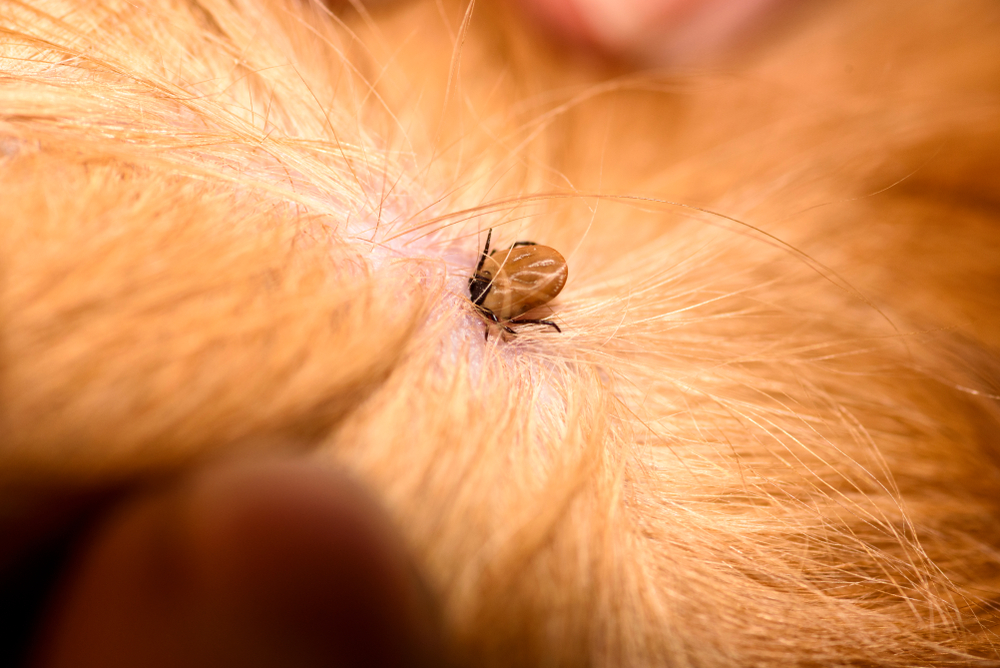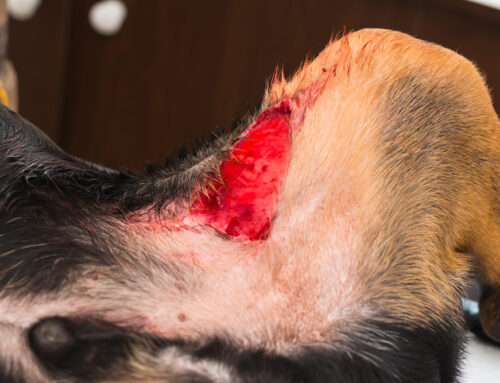Among the various health threats your pet will face, fleas and ticks rank high on the list. These tiny parasites cause considerable discomfort and pose significant health risks to your furry friend and every family member. In this guide, our Alpine Animal Hospital team dives into the intricacies of flea and tick prevention, exploring the diseases these parasites transmit, the available prevention methods, and practical tips to keep these pests at bay.
Understanding the threat of fleas and ticks to pets
Fleas and ticks aren’t merely nuisances—they can transmit a plethora of diseases to pets and people. Among the most common diseases transmitted or caused by fleas are:
- Flea allergy dermatitis (FAD) — Many pets are allergic to the protein in flea saliva, which leads to intense itching, hair loss, and skin infections.
- Tapeworm infection — Fleas can carry tapeworm larvae, leading to intestinal infections in pets.
- Anemia — Severe flea infestations can cause anemia, especially in young or small pets.
- Bartonellosis (i.e., cat scratch fever) — This is caused by the bacterium Bartonella henselae, which can be transmitted to people through flea bites or an infected cat’s scratch.
On the other hand, ticks can transmit diseases such as:
- Lyme disease — Lyme disease is a bacterial infection caused by Borrelia burgdorferi and is transmitted by black-legged, or deer, ticks. The disease can cause recurring fever, joint pain, lethargy, and in severe cases, kidney dysfunction.
- Rocky Mountain spotted fever — Transmitted primarily by the American dog tick, this disease can cause fever, joint pain, respiratory and gastrointestinal issues, and bleeding disorders.
- Ehrlichiosis and anaplasmosis — These bacterial infections transmitted by various tick species cause a multitude of health issues in various phases. Clinical signs can include anorexia, stiffness, difficulty breathing, bleeding disorders, and neurological issues.
Flea and tick prevention types
While the health risks carried by fleas and ticks are numerous, many prevention methods can safeguard your pet. These include:
- Topical treatments — These treatments are applied directly to the pet’s skin and often protect against fleas and ticks for one or three months. Topical treatments are easy to apply and highly effective and work well for pets who resist oral medications.
- Oral medications — Pills or chewable tablets offer systemic protection by killing fleas and ticks when they bite your pet. They’re convenient and ideal for pets who dislike topical treatments, or if you have small children in your home.
- Collars — Certain flea and tick collars emit a gas that repels parasites, while others kill fleas and ticks by releasing chemicals stored in your pet’s fat layer or natural skin oils. Veterinarian-recommended flea and tick collars provide long-lasting protection but are not as effective as topical and oral treatments.
Choosing the best flea and tick preventive for your pet
Selecting the right flea and tick prevention method depends on various factors, including:
- Lifestyle — Consider your pet’s activity level and environment. Pets who spend a lot of time outdoors or in wooded areas may require more robust protection.
- Species and size — Some products are formulated specifically for dogs or cats, while others are suitable for both. Additionally, dosage varies based on the pet’s weight.
- Health status and breed — Pets of certain breeds or those with underlying health conditions may need specific formulations or to avoid particular ingredients.
- Efficacy — Research the effectiveness of different products, considering factors such as duration of protection and kill rates for fleas and ticks.
- Ease of administration — Choose a prevention method that makes you and your pet comfortable. For example, if you or your pet dislike the feel of topical treatments, an oral medication might be a better option.
Preventive flea and tick measures for pets

In addition to using flea and tick prevention products, the following measures can further reduce infestation risk:
- Regular grooming — Brushing your pet regularly can help detect and remove fleas and ticks before they become a problem.
- Environmental control — Wash your pet’s bedding frequently and vacuum your home regularly to remove flea eggs and larvae.
- Outdoor maintenance — Keep your lawn trimmed and remove any debris or tall grass where ticks may thrive.
- Year-round prevention — Fleas and ticks can also be active in colder months, so maintaining preventive measures year-round is essential.
- Regular veterinary visits — Schedule regular visits with your Alpine Animal Hospital veterinarian to monitor your pet’s health and discuss flea and tick prevention strategies.
Protecting your pet from fleas and ticks is not only essential for their comfort but also for their overall health and well-being. Give our Alpine Animal Hospital team a call to discuss parasite prevention options that will suit your furry pal’s needs.







Leave A Comment